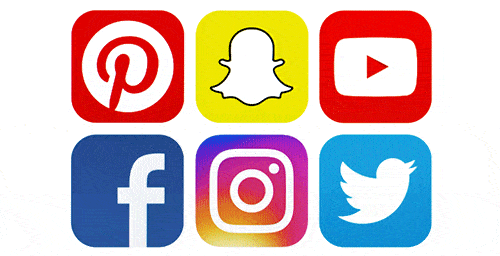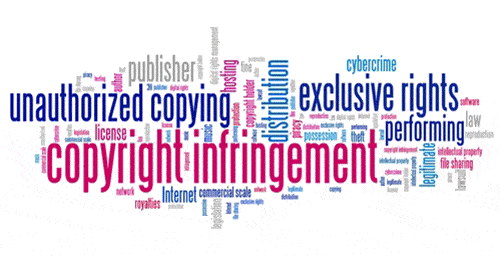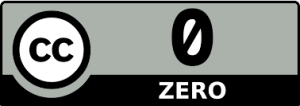Understanding Image Usage Rights For Your Commercial Website: What You Need To Know To Stay Out Of Trouble
We’ve all heard the saying a picture is worth a thousand words before. This is especially true when it comes to creating engaging content on your website or blog. Unfortunately a picture can also be worth thousands of dollars if you use a protected image without abiding by it’s usage guidelines.
With so many popular photo sharing and stock photo sites out there, finding good quality images online can be quite easy. Understanding which images you can and cannot freely use on your commercial website, however, is much more confusing.
To get a better understanding of what kinds of images you can and can’t use online, we have put together this simple guide. Here you will learn about what can happen if you use an image without abiding by its usage rules and how to understand the different levels of image usage rights for online images.
What Happens If You Use A Protected Image Without Proper Permission
When looking for free images online that you wish to use on your website or blog for commercial reasons, be sure to check what usage right are associated with the photo. By default, every image is protected by copyright laws the moment it is produced. Copyright laws give the creator of the image exclusive rights such as:
- the right to reproduce copies of the image for sale
- the right to display the image publicly
- the right to transfer these rights onto someone else for free or for a fee
If you end up using an image on your commercial website in a way that doesn’t abide by it’s usage policy, you can end up being charged by the owner of that image. Often times these fines can be quite significant, even if you had no idea you were infringing on the usage rights of the image.
Understanding image usage rights can be quite difficult as there are several classifications that an image can fall under. This depends on how the creator or owner of the image decides to protect it, or under what circumstances the image will be used.
Generally speaking, there are four classifications you should understand when it comes to image usage rights that should keep you safe from any legal disputes. These are:
- Copyright;
- Creative Commons;
- Fair Use, and;
- Public Domain.
Understanding Copyright Laws For Online Images
As mentioned above, every image is protected by copyright laws by default once it is created, and will remain protected for a pre-determined amount of time. Copy-written images can be used on commercial websites and blogs as long as the right permissions are granted by the owner of the image or the image is being used in a specific way (more on this later).
Within the scope of copyright laws, there are two major categories that should be understood to make sure you are using an image appropriately:
Royalty-free images
If you are granted the right to use a royalty-free (RF) image, either by paying for the image or getting written permission from the image owner, you have the right to use this image as many times as you’d like without paying any further license fees or requesting any additional permission.
Rights managed images
The usage policy for a rights managed (RM) image is much more strict than that of RF images. In this case, if you get approval to use an image, either by paying a license fee or getting permission from the owner, you can only use the image one time. If you need to use the image for multiple purposes you will need to have approval or pay a fee for each individual use of the image.
Understanding Creative Commons Provisions
Often times, the owner of a copy-written photo may want to add certain provisions to the usage of their image. These provisions are called creative commons provisions and often have certain restrictions associated with the way the image is used and distributed.
The 7 most used creative commons licenses are:
Creative Commons Zero License
This is the least restrictive license type by far. With a Creative Commons Zero provision put on an image, the image owner gives anyone who wishes the right to use, alter, distribute and copy their image for free, regardless of their purpose for using the image. With this provision it is also unnecessary to ask permission from or provide attribution to the owner or creator of the image.
Attribution License
Just as the name implies, anyone can use this type of image for free and without permission, as long as they give attribution to the original creator or owner of the photo. This can be as simple as providing a link from the image back to the original page that the image is displayed on. Anyone using an image with an attribution license also has the right to alter, distribute and copy the image.
Attribution + Share Alike License
Very similar to the Attribution license, with the added provision that if you decide to modify the image in any way, your new image must also fall under the same license. As a result, anyone who wishes to use your modified image can do so under the same provision as the original image that you used.
Attribution + Non Commercial License
Similar to the Attribution license, but with the added provision that the image can not be used on any commercial website.
Attribution + No Derivatives License
This license gives you the same access to an image as the attribution license, but does not allow you to alter the image in any way. Just like in the attribution license, you need to provide a link to the original image to give it credit.
Attribution + Non Commercial + Share Alike License
Same as the Attribution + Share Alike License, but can only be used on a non commercial site. Therefore, you must provide a link back to the original image, refrain from using the image for commercial purposes and can modify the image in any way you like as long as you allow others to use your new image in the same capacity as the original.
Attribution + Non Commercial + No Derivatives License
Same as the Attribution + No Derivatives License, but can only be used on a non commercial site. Therefore you can not modify the image in any way, must provide a link to the original photo and only use the image for non commercial purposes.
Fair Use Image Rights
Sometimes even copyrighted images can be used without any of the stipulations mentioned above, meaning that you can freely use the image without paying for the image, asking permission from the owner or providing attribution in the form of a link to the original image.
This is only possible in certain circumstances where the image is being used for one of the following purposes:
- for educational purposes;
- for research purposes;
- for personal, non-commercial use, or;
- to benefit the public in some way
If the image is being used for one of these reasons, it will be subject to fair usage rights, protecting the person using it from legal action for not having a license to use the photo.
Public Domain Images
The least restrictive images of all are those that fall under the category of public domain images. These types of images are no longer subject to copyright laws as a result or several reasons, such as:
- the creator of the image is no longer alive and no one owns the copyright to the image
- the creator of the image willingly removes their copyright
Final Thoughts
This post is a basic guideline that can be used to understand image usage rights online. Since it is such a complicated topic to understand, the best thing you can do if you are unsure about a particular image is be vigilant and always contact the creator or owner of the image. You can never be too sure and it is your responsibility to abide by the law so do whatever you can to protect yourself from an unwanted fine.









